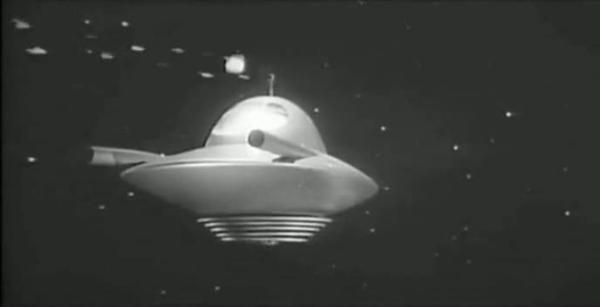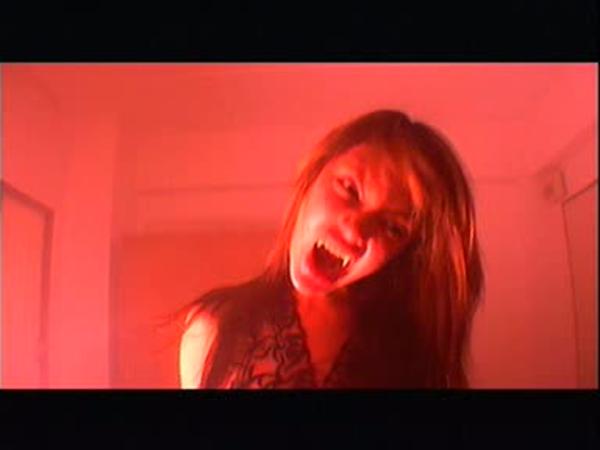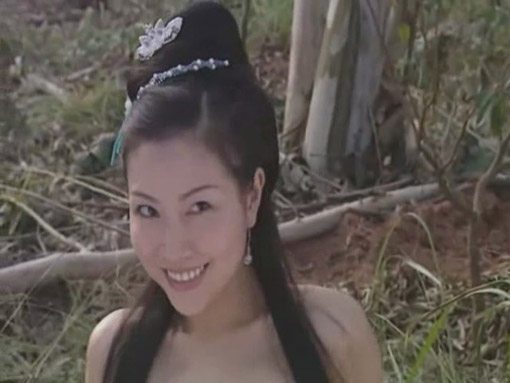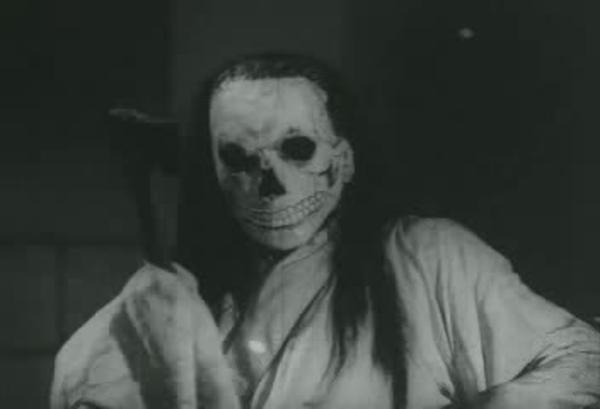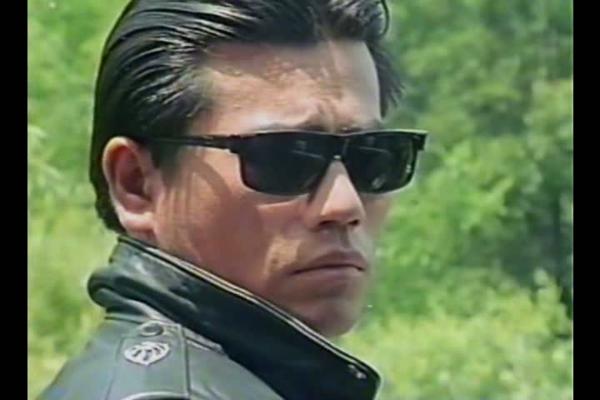
Kalai Arasi
aka கலை அரசி aka Queen Of Arts

1963
Written by T. E. Gnanamoorthi
Directed by A. Kasilingam

Science fiction films in India are rare, and older science fiction films are even rarer. And once the filmography of Dara Singh is removed, it becomes a sparse selection indeed. But there is a selection there. And TarsTarkas.NET is proud to give you Kalai Arasi, one of the few Tamil films to feature alien invaders and flying saucers. As usual, the aliens come to Earth to steal something, this time it’s not our women or our men or Santa Claus, but our music. You see, these aliens are tone deaf and have no culture, so their king sends a mission to Earth to steal someone to teach music to the people. Hence the English translation of Kalai Arasi, Queen Of Arts.
The 1963 production features alien design straight out of 1950s drive in cinema, with obvious older elements as well. The aliens wear overly silver space suit costumes while traveling to Earth, complete with goggles and lots of doodads tacked on. Their costumes look like Prince of Space, a fireman, and a roll of tin foil were dumped in a blender. The actors walk in stiff gates that emulate old boxy robots while wearing the space suits. On their home planet, everyone walks normal (this is explained in plot by the gravity being lighter on the alien world, and when the hero visits he needs to wear special shoes that weigh him down!) and dress in a mix of Roman/Indian design. The neatest part about the aliens is they salute not by raising their hands to their heads or doing some other odd gesture, but by standing on their toes twice in rapid succession to acknowledge the orders. It is a great little touch that adds believability to the alien culture (and transcends the lack of subtitles!)

The planet backdrops contain both science fiction inspired cities and heavenly clouds. The influence of the mythological films probably gives the reason for the overabundance of clouds (and the alien’s non-spacesuit costumes!) Inside the flying saucers, when in flight the camera angles are haphazard and jerk in random directions, while lights flash and metallic noises rumble in the background. The jarring angles act to disorient the viewer with the pure speed and alieness of the craft. The saucers are the envision of future technology without the computer revolution, a purely industrial age inspired technology setup. The insides looks like what a submarine from the world of Metropolis would look inside. The spacesuits also have the retro influences, a mix of Indian design and serials costumes (particularly , though there is no telling if the Indian film Return of Mr. Superman also influence the goggle design.)
The only alien character who does know music and song is portrayed as a jester and named Joker, his eccentric stylings show how he is an outcast on his own world due to his knowledge of song. He’s a nice character who helps the hero (he’s even played by the same actor, MGR), but has some obvious mental issues and as an effect of that does not live long. In fact, Kalai Arasi is not kind to anyone with mental problems, as there is another character who is presented as crazy who is murdered by the film’s villain. As both characters are played by the same couple that stars in the film, it’s an interesting statement to make. I would even argue Bhanumathi Ramakrishna does a better acting job as the more emotionally unstable Valli than she does as the sweet girl next door Vani.

Interestingly, for a film so focused on music and dance (it being the driving force for the theft of Vani), there is little remarkable singing or choreography. The most entertaining musical number is in the beginning, featuring two women (one cross-dressed as a man.) There is no real alien singing entertainment, even the Joker character dies before he can perform a cool space jam. The real lasting musical legacy is the love song for the couple that is sung in the beginning and features a few reprisals through the film.
The poor music may be one of the reasons Kalai Arasi did not fare well at the box office. It was also sandwiched between several MGR blockbusters. The weird tale, risky for the time, probably hurt the film more than it should. As far as I can tell, the Sarodi Brothers (the producers) never made another film. This is a shame, because Kalai Arasi looks great, and should be better known for the visuals alone. There is little about director A. Kasilingam in English, but he did direct Kaanji Thalaivan, a mythological starring MGR, and had a long career directing and producing.

The presentation is downright awful. A constant hissing noise is present through most of the film. There are obviously chunks missing from the film (including one very obvious part) and the length clocks in an almost exactly 2 hours. This is relatively short for a Tamil film, so that also points to parts missing. Luckily, the missing sections don’t factor too much into the plot (again, except for one part) so only a little bit of problems result. Hopefully the cuts were to fit it on tapes or something, and not because actual parts of the film are missing, but with cinema this old you never know. As you can probably imagine, there are no subtitles, but at TarsTarkas.NET, we don’t need no stinking subtitles!
Due to the lack of information on Tamil cinema, there will be a huge actor infodump, so if you just want to skip to reading about shiny space dudes in goggles shooting flames at a guy in a bear suit, skip below!

Tamil language cinema is mostly based in Tamil Nadu’s capital city of Chennai’s Kodambakkam area (meaning many big production companies are headquartered there), thus it is often called Kollywood. The films are popular in the southern Indian states that speak Tamil, and many are distributed worldwide. Tamil cinema is the second biggest largest film industry in India by volume of films produced.

Kalai Arasi stars Tamil film legend MGR. Maruthur Gopalan Ramachandran, billed as M. G. Ramachandran and usually referred to as just MGR, was one of the dominating forces of the Tamil film industry, which he parlayed into a wildly successful political career. MGR began acting as a youth in a local theater troupe to raise money for his family, and in 1935 began appearing in small roles in the emerging Tamil film industry. The success of Manthiri Kumari in 1947 gave him lead roles, and 1954’s Malaikallan made him a super star. Other notable films include the lead in Kollywood’s first color film Alibabavum 40 Thirudargalum, Nadodi Mannan (also directed and produced by MGR), Aayirathil Oruvan, and 1973’s Ulagam Sutrum Vaalibhan (one of the few Kollywood films to shoot scenes abroad back then, though 1969’s Sivantha Mann pioneered overseas shooting.)
The most famous MGR movie-related incident was when he was shot in the neck by fellow actor M.R. Radha in 1967. They had costarred together in 25 films, filming their last picture together just days earlier. M.R. Radha then shot himself in the head. Both men were taken to the hospital, the bullet permanently lodged in MGR’s neck. His voice was damaged and he was laid up for six weeks, as his fans cried in the streets. Despite all of this, MGR ran a Legislative Assembly campaign from his bed and won by a huge landslide. M.R.Radha also recovered (the gun and bullets he had used were too old to work properly) and went back to stage acting.
MGR was first elected to the Tamil Nadu Legislative Council in 1962 in the Dravida Munnetra Kazhagam (DMK) party. After his Tamil Nadu Legislative Assembly election he deliberatly got expelled from his party to form a new party called Anna Dravida Munnetra Kazhagam (ADMK), later renamed All India Anna Dravida Munnetra Kazhagam (AIADMK). The party was bolstered by MGR films, as MGR kept acting until he was elected Chief Minister of Tamil Nadu (basically governor of Tamil Nadu) in 1977, a position he continued to be reelected to until he died in 1987. He was a popular leader and spearheaded reforms involving nutrition and education. MGR’s death caused widespread riots, deaths and suicides for over a month. Violence during his funeral killed 29 people.

On that note, let’s meet the rest of the cast!

 |
Mohan (MGR) – Mohan is a poor farmer who is in love with Vani, the daughter of the rich landlord. He’s also the sole means of support in his family as his dad is MIA and his sister is always one tragedy away from selling her body. Then aliens come and mess everything up even more! |
 |
Vani (P. Bhanumathi) – The lovely daughter of the local landlord and key singer/dancer/choreographer of the area. In love with Mohan despite her father forcing her to date rich jerk Kannan. An alien kidnapping magnet! Paluvayi Bhanumathi Ramakrishna billed as P. Bhanumathi and commonly called just Bhanumathi. She began her career in 1935, appearing in over 200 films in Telugu and Tamil. Not only was she a popular actress, but she also did a lot of musical work, skilled in singing to the point she was rarely given a playback singer and did her own songs (she even did playback work for other actresses!) She directed 1953’s Chandirani. Bhanumathi later wrote short stories which were given much acclaim. She died in 2005. |
 |
Princess Rajini (Rajashree) – Alien princess who Vani is tasked to teach song and dance to. Falls for Mohan, despite Mohan’s love for Vani. Rajasree (credited as Rajashri) acted mainly in roles as a Princess, which is pretty good because she plays one here. She often starred alongside legendary actor NTR. |
 |
Kannan (P. S. Veerappa) – Rich jerk who thinks he’s dating Vani, though she’s really dating Mohan because Kannan sucks and has rage issues. He kidnaps the mentally ill Valli because she looks like Vani and marries her. Then his rage issues kick in again… P.S. Veerappa is a famous villain actor who became well known for his famous evil laugh, first appearing in Chakravarthi Thirumagal (1957). |
 |
Thinna (M. N. Nambiar) – Alien kidnapper and high-ranking alien. Is in line to marry Princess Rajini and become king, but then she goes and falls for Mohan when he arrives to get back his girl. When dressed in the spacesuit, Thinna wears black goggles. M. N. Nambiar (born Manjeri Narayanan Nambiar) was another famous villain actor, playing bad guys for over 50 years in what is described as over 1000 films (whether or not that is true, who knows?!) Nambiar has acted in Tamil, Telugu, Malayalam, Hindi, and in English (specifically the 1952 film Jungle.) Despite his famous villain persona, everyone described him as the nicest guy you’d ever meet. He died in 2008. |
 |
Malla (???) – The other alien kidnapper, known for wearing white goggles and getting left behind when they kidnap Vani. Easily defeated by rocks and sticks. |
 |
Valli (P. Bhanumathi) – Local woman with vast emotional problems who lost her sanity long ago. And she looks just like Vani so she’s kidnapped and forced to marry the evil Kannan. Strangled and forgotten. |
 |
Komali the Joker (M. G. Ramachandran) – Alien music man who helps Mohan once he reaches the alien world, but is tragically killed by a meteor. Mohan assumes his identity while searching for his kidnapped love. |
|


![]()








